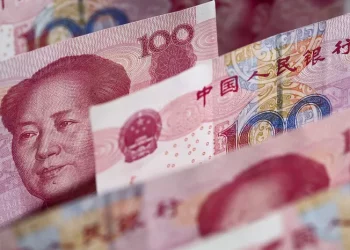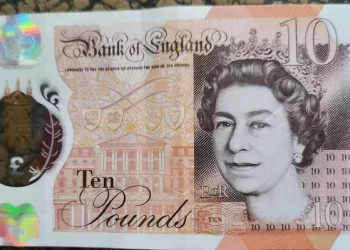The value of currencies fluctuates continuously due to a range of economic, political, and market factors, which makes understanding currency conversion an essential skill for anyone involved in the foreign exchange (forex) market. In this article, we’ll take a closer look at the relationship between the Australian Dollar (AUD) and the United States Dollar (USD), and specifically, how to convert $3,000 AUD into USD, along with the factors that influence this conversion rate.
The Basics of Currency Conversion
Currency conversion refers to the process of exchanging one currency for another at an agreed-upon exchange rate. The exchange rate is the value of one currency in terms of another. For example, if the exchange rate between the Australian Dollar (AUD) and the US Dollar (USD) is 0.70, it means that 1 AUD is equal to 0.70 USD. Therefore, to convert AUD into USD, you would multiply the amount of AUD by the exchange rate.
Understanding the AUD/USD Exchange Rate
The AUD/USD exchange rate is one of the most traded currency pairs in the forex market. It represents how much the US Dollar is worth in relation to the Australian Dollar. Exchange rates fluctuate due to various factors, including interest rates, inflation, geopolitical events, and economic data releases. These fluctuations mean that the rate at which you convert AUD to USD can vary not only from day to day but even from hour to hour.
To convert $3,000 AUD into USD, you first need to determine the current exchange rate for the AUD/USD pair. This rate is quoted in real-time by financial institutions, currency traders, and brokers around the world. For instance, if the exchange rate is 0.65, $3,000 AUD would be equal to:
3,000 AUD×0.65=1,950 USD
How Do Currency Rates Affect Conversion?
The exchange rate between two currencies is influenced by a multitude of factors. These factors include, but are not limited to:
Interest Rates: Central banks set interest rates, which in turn affect currency values. When the Reserve Bank of Australia (RBA) raises interest rates, the AUD tends to strengthen, because higher rates offer better returns to investors, making the currency more attractive. Conversely, when the US Federal Reserve raises interest rates, the USD tends to strengthen against other currencies, including the AUD.
Economic Data: Strong economic data from either country can drive changes in the exchange rate. For example, if Australia reports a higher-than-expected GDP growth rate or a drop in unemployment, the AUD may rise in value. Similarly, positive data from the US could lead to a stronger USD.
Political Factors: Political stability, fiscal policy, and government decisions in either the US or Australia can significantly impact the exchange rate. A change in government, new trade agreements, or geopolitical tensions could lead to fluctuations in the value of the AUD against the USD.
Market Sentiment and Speculation: The forex market is driven in part by speculative trading. Traders often buy and sell currencies based on expectations about future movements in exchange rates. These market movements can cause the value of a currency pair like AUD/USD to shift rapidly, sometimes without any immediate economic or political triggers.
Commodity Prices: As Australia is a major exporter of commodities such as iron ore, gold, and coal, the price of these goods can influence the AUD. When global demand for Australian commodities rises, the AUD may strengthen due to increased demand for the currency to pay for these goods.
Historical Exchange Rates Between AUD and USD
To better understand how the exchange rate between the AUD and USD has changed over time, it’s helpful to look at historical trends. The AUD has experienced significant fluctuations against the USD over the past few decades.
For instance, in the early 2000s, the Australian Dollar was weaker than the US Dollar, often trading around 0.50 USD. However, by the mid-2010s, the AUD strengthened considerably and even approached parity with the USD in 2011, meaning that 1 AUD was worth 1 USD for a brief period.
Since then, the value of the AUD has experienced ups and downs, primarily driven by changes in global commodity prices, economic growth in both countries, and fluctuations in interest rates. As of the most recent data, the AUD is generally trading between 0.60 and 0.75 USD. However, it is essential to check the real-time exchange rate to get an accurate figure for your conversion.
Real-World Example: Converting $3000 AUD to USD
Let’s use a real-world example to illustrate how you would convert $3,000 AUD to USD using the current exchange rate. If the current exchange rate is 0.65, you would multiply the amount in AUD by the exchange rate to get the equivalent value in USD.
For example:
3,000 AUD×0.65=1,950 USD
Therefore, if the exchange rate is 0.65, $3,000 AUD would convert to $1,950 USD.
However, if the exchange rate were different, such as 0.70, the conversion would be:
3,000 AUD×0.70=2,100 USD
As you can see, a slight change in the exchange rate can have a significant impact on the amount of USD you would receive for your $3,000 AUD.
Currency Conversion Tools
For most individuals and businesses, converting currencies requires using reliable tools and services. Some of the most common methods for currency conversion include:
Banks and Forex Providers: Many banks offer currency exchange services, both online and in-branch. However, be aware that banks often charge a fee for converting currencies, and they may offer slightly less favorable exchange rates than other providers.
Online Currency Converters: Online tools like XE, OANDA, or Google’s currency converter can provide real-time exchange rate information and help you calculate how much your AUD is worth in USD. These tools are user-friendly and accessible to anyone with an internet connection.
Forex Brokers: Forex brokers, especially those catering to retail traders, offer the ability to trade AUD/USD directly. These platforms may provide more favorable exchange rates than banks, and traders can benefit from real-time market rates.
Currency Exchange Apps: Mobile apps designed for currency exchange can also offer quick, real-time conversions. Popular apps like Revolut, Wise (formerly TransferWise), and PayPal offer currency conversion services, often with competitive rates and lower fees than traditional banks.
Impact of Conversion Fees
When converting currencies, it’s important to be mindful of any fees that might be associated with the process. These fees can affect the amount of USD you receive in exchange for your AUD. Common fees include:
Service Fees: Financial institutions or currency exchange services may charge a flat fee or percentage-based fee for currency conversion. For example, a bank might charge a $10 fee for converting $3,000 AUD into USD.
Exchange Rate Margins: Most currency exchange providers offer a rate that includes a margin above the interbank exchange rate, which is the rate banks charge each other. This margin ensures that the service provider can make a profit on the transaction. Be sure to compare rates and fees to find the most cost-effective option.
ATM Withdrawal Fees: If you withdraw USD from an ATM in the US using your Australian bank card, you may incur foreign transaction fees or ATM withdrawal fees.
Hidden Fees: Some currency exchange providers, especially online services, may not be transparent about additional fees until after you make a transaction. Always read the terms and conditions before proceeding with the conversion.
Strategies to Minimize Conversion Costs
If you’re planning to convert a large sum of AUD into USD, there are a few strategies you can use to minimize the costs associated with the transaction:
Use Online Currency Conversion Tools: As mentioned earlier, online tools like XE or OANDA offer competitive rates with little or no fees. These platforms are ideal for individuals looking to convert smaller sums of money with minimal costs.
Plan for Large Conversions: If you need to convert a substantial amount of AUD to USD, consider waiting for favorable exchange rates. If the AUD strengthens against the USD, you will receive more USD for your AUD. Conversely, if the USD strengthens, you might want to wait until the AUD regains value.
Avoid Airport Currency Exchange: Currency exchange services at airports often offer poor exchange rates and high fees. For better rates, it’s better to convert your currency at a bank, through an online service, or through a forex broker.
Consider Forex Services for Businesses: For businesses that need to make regular currency conversions, using a forex provider specializing in international transfers can help secure better rates and lower fees.
Conclusion
Converting $3,000 AUD into USD requires understanding the exchange rate between the two currencies and considering the factors that influence this rate. While the exact amount you will receive in USD depends on the current exchange rate, knowing the variables involved in currency conversion can help you make more informed decisions.
Exchange rates fluctuate due to economic conditions, interest rates, political events, and market sentiment, meaning the rate you get today may differ from the rate you receive tomorrow. Therefore, it’s crucial to stay updated on market trends, consider conversion fees, and use reliable conversion tools to ensure that you get the best possible value for your currency exchange.
With this knowledge in hand, you can navigate the world of currency conversion more effectively, whether you’re converting a small sum for travel or managing larger amounts for business or investment purposes.
Related Topics:


























